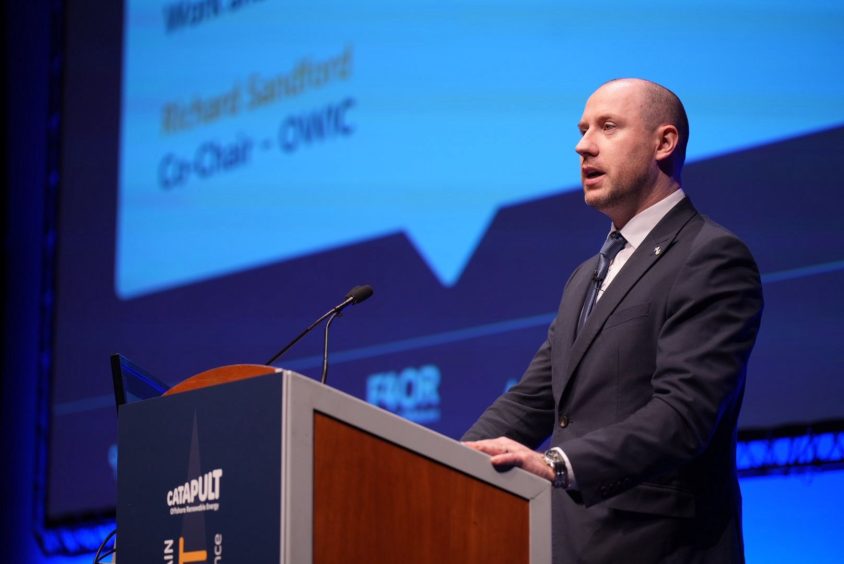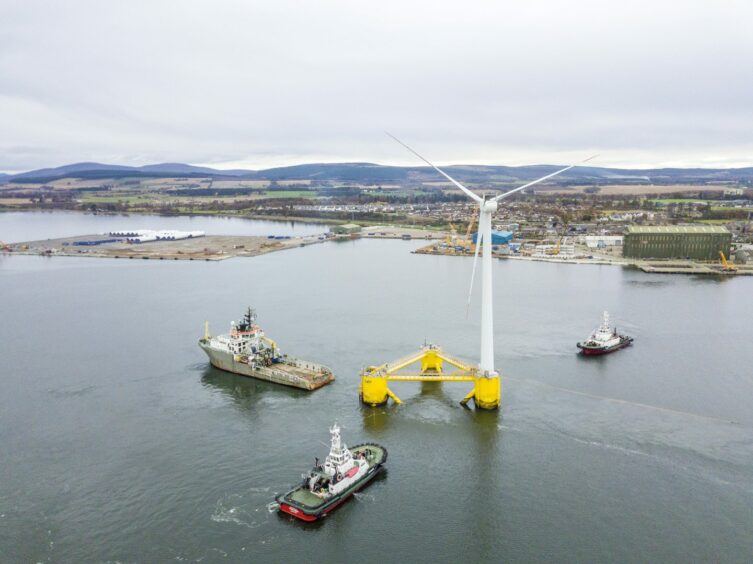
An uptick in strike prices leaves the offshore wind sector in a ‘good place’, according to supply chain experts – but challenges remain around investing in grid and infrastructure.
Speaking during a panel session at the Offshore Renewable Energy (ORE) Catapult’s supply chain spotlight event in Edinburgh, former UK Offshore Wind Champion Tim Pick talked of the industry’s “rollercoaster ride” this year in the face of project cancellations and rising prices.
Allocation Round 5 (AR5), held earlier in 2023, received no bids for offshore wind developers amid low strike prices and hefty inflationary costs. In response, the UK Government upped AR6 strike prices by 66% from £44/ MWh to £73/ MWh for fixed bottom wind, and by 52% for floating projects from £116/ MWh to £176/MWh.
Offshore wind will also be allocated via a separate funding pot in recognition of “the high number of projects ready to participate”.
Mr Pick welcomed the “very robust response” from UK government, while Offshore Wind Industry Council (OWIC) co-chairman Richard Sandford said proposed AR6 strike prices are “absolutely where the industry needs it to be” for both fixed and floating.
“I think we’re in a good place. I genuinely think the government have laid out what industry needs, we just need to act now and deliver,” he noted.
It follows a survey by ORE Catapult released ahead of the event which saw respondents express a less favourable outlook on the sector than last year, though forecasts for medium and short-term growth remained optimistic.
Port investment
Turning to ports, Mr Pick pointed to the importance of establishing UK infrastructure to build and service the emerging floating sector.
“We have a lot of rhetoric around floating wind in this country…but we still haven’t assembled and launched a floater from a UK port yet.” he remarked.
Earlier this year he said it was “embarrassing” that work to install and maintain the Kincardine floating wind farm off Aberdeen had been historically carried out overseas due to a lack of local capability.
Asked whether enough is being done to help build that capacity, Scottish Cabinet Secretary for Wellbeing Economy, Fair Work and Energy Neil Gray pointed to a recently announced £500 million fund to anchor the offshore wind supply chain in Scotland, of which ports would form a key recipient.
“The £500m is really important for making sure that that not just port infrastructure but wider infrastructure able to respond to these huge opportunities. I don’t single out any one port here, all ports across Scotland have the opportunity for a major ramp up in business and a diversification of their business from offshore renewables,” he said.
“The £500m is important in that, but we’re already seeing potential investors in this space come and look at our port infrastructure and are very impressed with what’s available.”
Offshore Renewable Energy Catapult chief executive Andrew Jamieson said ports were part of the success criteria for UK offshore wind, but suggested larger challenges would be faced in scaling up a new portion of the supply chain to meet demand.
“Ports and O&M I worry less about… I think for the bigger stuff like floating wind and construction – there’s two challenges.
“Those ports are likely to be new entrants into the sector so all the confidence we’ve enjoyed from 15-20 years in the sector, they don’t have.”
Mr Jamieson also said that manufacturers of floating substructures would “probably be all new to the sector as well.”
“So there’s two very large customers/stakeholders that are new to all of this. And I think that’s a challenge because the scale of what we’ll be asking them to invest in is enormous.
“It’s one thing to get a project or two away. It’s a different thing to look at a full pipeline of potential projects and get the costs down. We still don’t know other than by volume how you’re going to get the costs down. It was an easier thing to do as you made bigger turbines in fixed bottom, but it’s the complete reverse [in floating],” he added.
But a focus on cost reduction would also mean innovating designs “in parallel” with scaling up industrialisation and manufacturing.
“My plea is we need a strategic solution for all of that – leaving it entirely to the market, I don’t like that. And that’s another Rubicon of how close government gets to the market in terms of how helping to steer things in future,” he continued.
“I think more than anything else we’ve ever seen in this sector, that’s going to be space where we have to work extremely tightly between the public and private sector to maintain levels of confidence and also look to the pathway to make sure costs are coming down, projects are getting more competitive and answering the jobs equation at the same time.
“That’s not a market thing alone.”
Recommended for you

 © Supplied by Port of Cromarty Firth
© Supplied by Port of Cromarty Firth